Stretching is essential when heading into the garden. At the start of gardening season numerous new injuries show up both at the local emergency department as well as at Kitchener Physiotherapy & Wellness. Gardening therefore needs to be taken seriously and treated like any other physical activity you are about to engage in. A stretching routine can help you avoid a gardening injury. Stretching before and after gardening helps to minimize muscle imbalances, prevent injury, and improve your ability to garden for longer periods. The following stretching program is designed for people who do not have any current injuries or individual stretching needs. If you have an injury, or a specific mechanical imbalance that may be inhibiting your ability to garden, your Kitchener Physiotherapy & Wellness physiotherapist can design a stretching program more specific for you.
When is the Best Time to Stretch?
When your muscles are warm and relaxed! For optimum performance you should stretch after you have done a general body warm up of about 5-10 minutes. A brisk walk around your yard or around your block in order to get the heart rate and body temperature up can do the trick. You can use this time to assess your gardening situation and think about your best plan for tackling the task at hand.
Dynamic stretches are used prior to gardening (but after your warm up) and are essential in preparing your muscles for the repetitive movements required with gardening. Your pre-gardening stretches can be done in any part of your garden or yard that affords you a bit of room. Be sure not to let your body cool down between warming up and doing the dynamic stretches, and starting the gardening. Static stretches, on the other hand, are more useful to improve your overall flexibility and are most effectively done after you have finished your gardening; soon after the tools are washed, dried, and hung ready for next time!
Rules for Dynamic Stretching:
Warm up your body first, then stretch while your muscles are still warm and do not let your body cool down before engaging in the task at hand.
Move through your range of movement, keeping control of the movement with your muscles. Do not allow momentum to control the movement by "flinging" or "throwing" your body parts around.
You may feel light resistance in your muscles, but you should never feel pain during a stretch.
Start with slow, low intensity movements, and gradually progress to full-speed movements through range of motion. Complete these motions for several repetitions (10-15 times.)
Rules for Static Stretching:
- Be sure to stretch while the muscles are still warm after gardening.
- Slowly take your muscles to the end of their range. You will feel slight resistance in the muscle, but you should never feel pain during a stretch.
- Hold the stretch in a static position. Do not bounce.
- Maintain each stretch for 20-30 seconds. Repeat each stretch 2-3 times.
Essential Stretches for Gardening:
These muscles are the key muscles used when gardening Don't forget to stretch both sides. The stretching program shown below will take about 10-12 minutes to complete.
Dynamic Stretches:
Neck stretch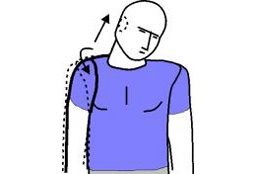 Arm Swings
Arm Swings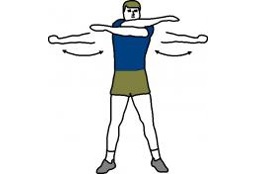 Shoulder Swings
Shoulder Swings Wrist Circles
Wrist Circles Leg Swings Forward and Back
Leg Swings Forward and Back
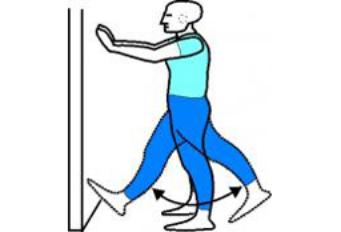 Back Rotation Stretch
Back Rotation Stretch 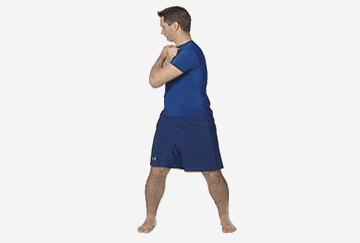 Lunges
Lunges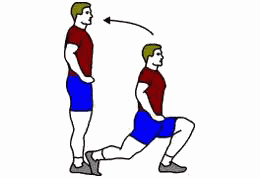 Static Stretches
Static Stretches
Neck Stretch Posterior Shoulder Stretch
Posterior Shoulder Stretch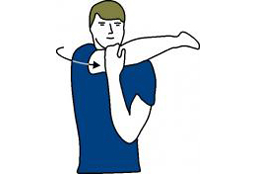 Chest Stretch
Chest Stretch Standing Back Extension Stretch
Standing Back Extension Stretch Hamstring stretch
Hamstring stretch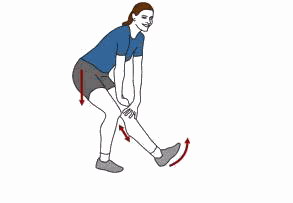 Quadriceps stretch
Quadriceps stretch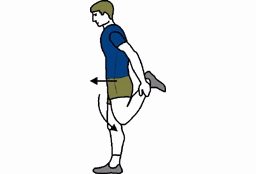 Hip Flexor Stretch
Hip Flexor Stretch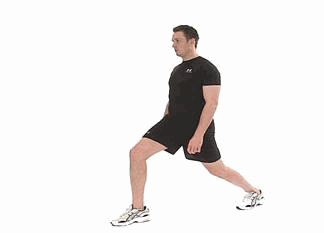 Wrist Extensors
Wrist Extensors 
Wrist Flexor  Calf Stretch-Gastrocnemius
Calf Stretch-Gastrocnemius
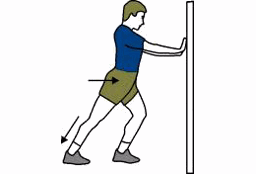
Click on a link below to learn more:








